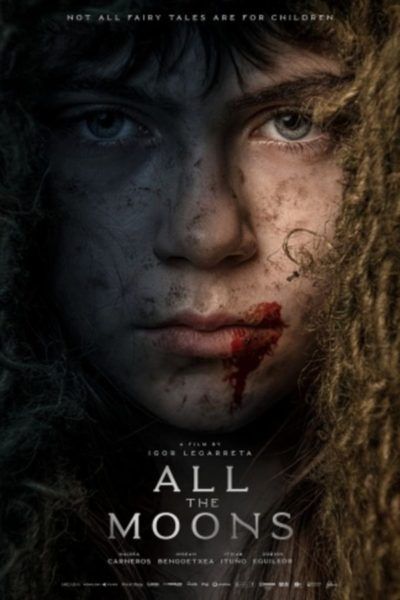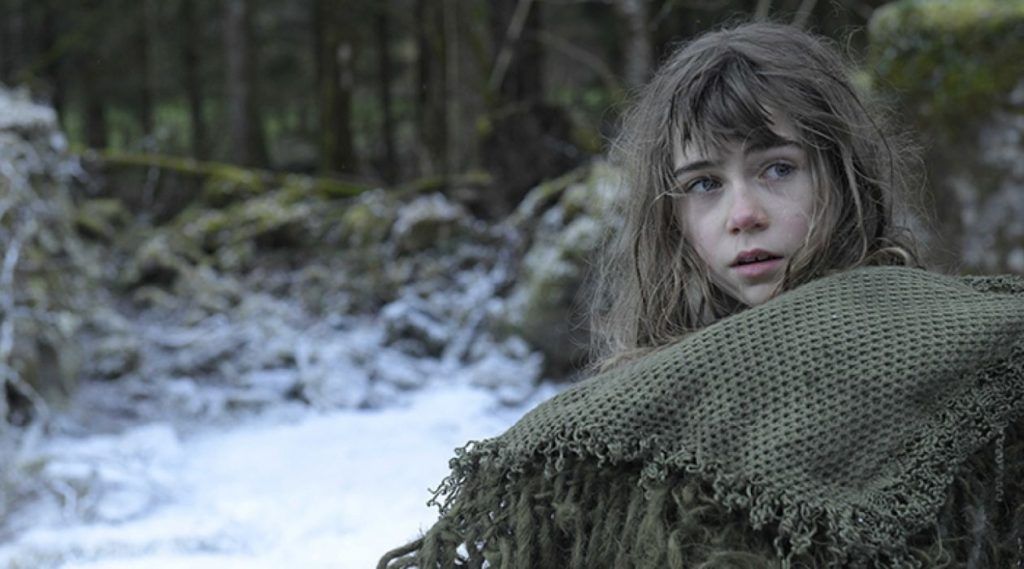
Rating: C
Dir: Igor Legarreta
Star: Haizea Carneros, Josean Bengoetxea, Itziar Ituño, Zorion Eguileor
a.k.a. Ilargi Guztiak
I kinda wanted to rate this higher, but the cold, hard truth is, I fell asleep in the middle of it. There are times when that’s on me, and I will allow for that. Here, though, it feels like the fault is more the movie than mine. In fact, I am literally yawning as I type. Now, I get all the superlatives which have been thrown around about this one, whose 6.7 rating on IMDb pushes it into the top 10 of the films we’re covering here. Beautiful, lyrical, poetic, heart-rending etc. I just wanted more to happen. For a film which seems to take place over a period of sixty years or so, it could definitely have used more… Well, while I won’t necessarily say “action”, let’s go with “stuff taking place.”
It begins in 1876, during the Third Carlist War in Spain. Boy, do those hot-blooded Hispanics love themselves a good civil war, apparently. I mean, we Brits only had one of the damn things in our history: Spain seems to have had four in about a century. Anyway, this one includes a Catholic orphanage being shelled, and right from the start the film’s anti-religious bent is apparent. The nuns refuse to leave despite the threat, merely instructing the orphans to “Pray. Louder.” This offers as much protection from the bombs as you would imagine. One of the young residents (Carneros) is rescued from the ruins by a mysterious woman (Ituño), who offers to heal her, but “You must really want it… You must want it from the heart.” The girl accepts, and is turned by the woman, who is a vampire.
 Not that the movie ever uses the V word, and the lifestyle here is different from the usual one of castles and elegance. The group of which they are part seem to spend much of their time hiding out in caves, hunted by humanity and unable to venture out in daylight. It’s not even clear how much a threat they pose, since they can survive on animal blood: there’s no indication of them hurting the living. An attack by soldiers causes them to scatter, with the girl left to fend for herself. Over the ten years (!) that follow, she scratches out a feral existence, but through a process of steady exposure, develops a tolerance for the sun. I can’t believe she’s apparently the first in the history of vampiredom to have ever figured out they just need to tough it out, but whatever.
Not that the movie ever uses the V word, and the lifestyle here is different from the usual one of castles and elegance. The group of which they are part seem to spend much of their time hiding out in caves, hunted by humanity and unable to venture out in daylight. It’s not even clear how much a threat they pose, since they can survive on animal blood: there’s no indication of them hurting the living. An attack by soldiers causes them to scatter, with the girl left to fend for herself. Over the ten years (!) that follow, she scratches out a feral existence, but through a process of steady exposure, develops a tolerance for the sun. I can’t believe she’s apparently the first in the history of vampiredom to have ever figured out they just need to tough it out, but whatever.
After being caught in a bear trap, she’s taken in by a kindly farmer, Candido (Bengotexea), whose wife and daughter had previously died, leaving him alone. When he’s unable to find the girl’s family – that she’s much older than she looks doesn’t help – he adopts her, giving her the name of Amaia. But as further years pass, turning into decades, Amaia realizes that the “gift” she received was as much a curse. Just like Connor MacLeod, she comes to realize all she can do is watch, as anyone she cares about, such as Candido, inevitably grows old and dies, while she remains unchanging. Eternal life sucks, and with Amaia now cured of the whole “bursting into flames in sunlight” thing, there’s not much she can do about it. An unfriendly local priest (Eguileor) doesn’t help matters. Did we mention religion, like eternal life, sucks?
A resolution is achieved during the Spanish Civil War – the most recent one – when Amaia discovers that the “angel” who turned her was not killed during the attack by the soldiers as originally believed. She asks the angel, “Won’t you return what you took from me – death.” It’s all rather poignant, not least because the angel has also had enough. She’s exhausted by a life spent running and hiding in darkness: it’s not clear how long she’s been doing so, but it’s clearly considerably longer than Amaia’s six or so decades. Overall, this feels like a bit of a mash-up between Interview With the Vampire and Let the Right One In. You have the ill-considered decision to make a child into a vampire from the former, with the subsequent difficulty for that child to function in the real world of the latter.
 The film undeniably looks beautiful, whether it’s capturing the vampires sliding around in the confines of the cave, or later on, when things open up a little bit to the Spanish countryside. Or, more accurately, the Basque countryside, since that adds a different flavour to proceedings. I would suspect the work of Guillermo del Toro is also an influence, since it combines a down-to-earth approach to everyday life with fantastical elements. Yet things like the avoidance of the V word, left me feeling like this was a vampire movie for people who don’t like vampire movies very much. In fact, I’m not sure that the director Legarreta likes vampire movies very much. He seems more inclined to use them as a tool with which he can make Important Statements about other things, like mortality and… yep, religion.
The film undeniably looks beautiful, whether it’s capturing the vampires sliding around in the confines of the cave, or later on, when things open up a little bit to the Spanish countryside. Or, more accurately, the Basque countryside, since that adds a different flavour to proceedings. I would suspect the work of Guillermo del Toro is also an influence, since it combines a down-to-earth approach to everyday life with fantastical elements. Yet things like the avoidance of the V word, left me feeling like this was a vampire movie for people who don’t like vampire movies very much. In fact, I’m not sure that the director Legarreta likes vampire movies very much. He seems more inclined to use them as a tool with which he can make Important Statements about other things, like mortality and… yep, religion.
None of which makes this a bad film, as such. It’s just not my cup of tea. I can take vampires as villains, or vampires as heroes. I can even take sexy vampires, providing they do not sparkle. This approach though, where they’re not much more than sad losers? Unlike Right One In, I was never able to unlock much sympathy for Amaia. While I get the perpetual loneliness inherent in her situation, she felt too passive for my tastes. I mean, why wait sixty years before looking for others of your kind, who would be able to understand and relate to your situation? There are only a few moments where I felt the film successfully opened the emotional lock, most notably at the end, which is definitely among the more memorable of this month’s selections. Attractive though it certainly is, not one I’m likely to revisit.
This review is part of our October 2023 feature, 31 Days of Vampires.
